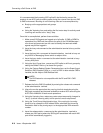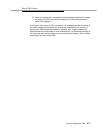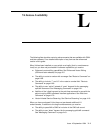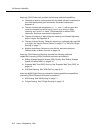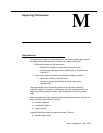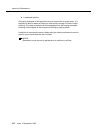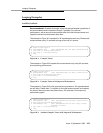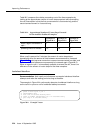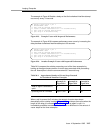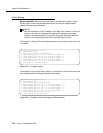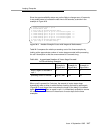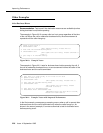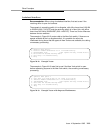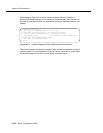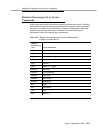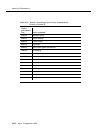
Looping Examples
Issue 4 September 1995
M-5
The example in Figure M-5 adds a delay so that the lookahead interflow attempt
occurs only every 10 seconds.
Figure M-5. Example Vector with Improved Performance
The example in Figure M-6 increases performance even more by increasing the
delay between lookahead interflow attempts to 30 seconds.
Figure M-6. Another Example Vector with Improved Performance
Table M-2 compares the relative processing cost of the three examples by
looking at the approximate number of vector steps executed while processing
the call. Assumption is that the announcement is 5 seconds long.
When a call is queued for 5 minutes, the amount of vector steps drops
dramatically when a delay is added (Figure M-5), and drops even more when the
length of the delay is increased (Figure M-6). When an agent in split 1 is
immediately available to answer the call, there is no difference in the amount of
vector steps for the three examples.
Table M-2. Approximate Number of Vector Steps Executed
for Lookahead Interflow Examples
Example in
Figure M-4
Example in
Figure M-5
Example in
Figure M-6
when a agent is available in
split 1
111
queueing time of 5 minutes up to 1,000 85 30
1. queue-to main split 1 pri l
2. announcement 3000
3. wait-time 20 seconds hearing music
4. route-to number 93035555555 cov n if unconditionally
5. wait-time 10 seconds hearing music
6. goto step 4 if unconditionally
1. queue-to main split 1 pri l
2. announcement 3000
3. wait-time 20 seconds hearing music
4. route-to number 93035555555 cov n if unconditionally
5. wait-time 30 seconds hearing music
6. goto step 4 if unconditionally



